The work and how it was organized was confusing enough. So let’s not do the same to the story. I’ll be changing how this narrative is told somewhat by focusing on individual projects. But for now, let’s bring ourselves up to date on where we are.
In the summer of 1995 we were preparing to haul the boat for the first time since 1991. So the race was on to get the cabin and deck to the point where it could be exposed to some weather. The epoxy and glass was compete on the deck and cabin, with the exception that the toe rail was still in place. The epoxy had been run out to the rail but yet to be continued under it and over the edge of the covering board. The plan was to remove the rail later, finish the cloth over the edge and then put the toe rail back on.
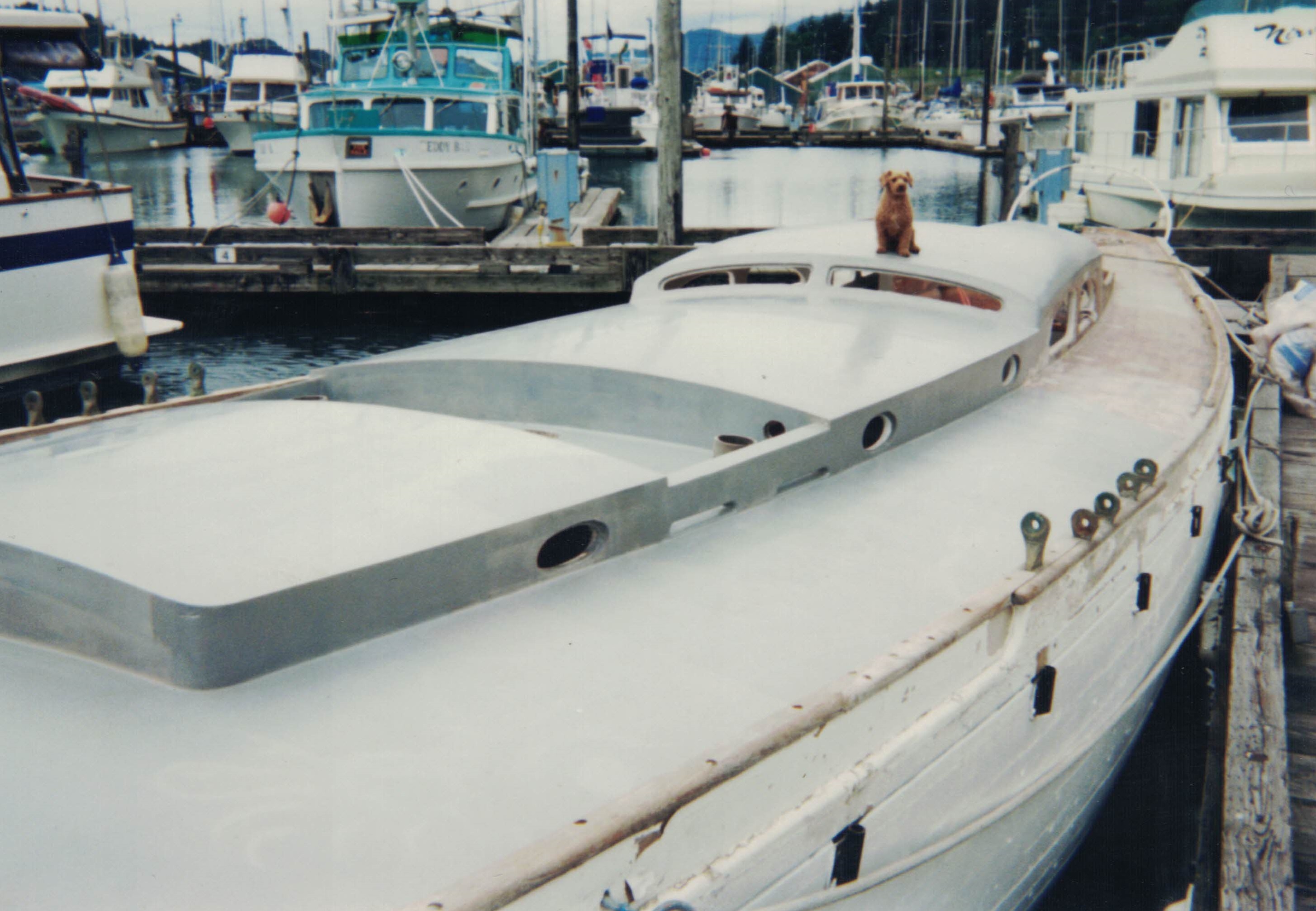
The cockpit was torn apart and awaiting the work to be done at the rudder post before it could be sealed up. The interior was still an awful mess. The engine beds were not finished. I needed to build bulkheads and the old ones were not completely removed yet. I had no cabin sole. All that and there was no rigging or deck gear.
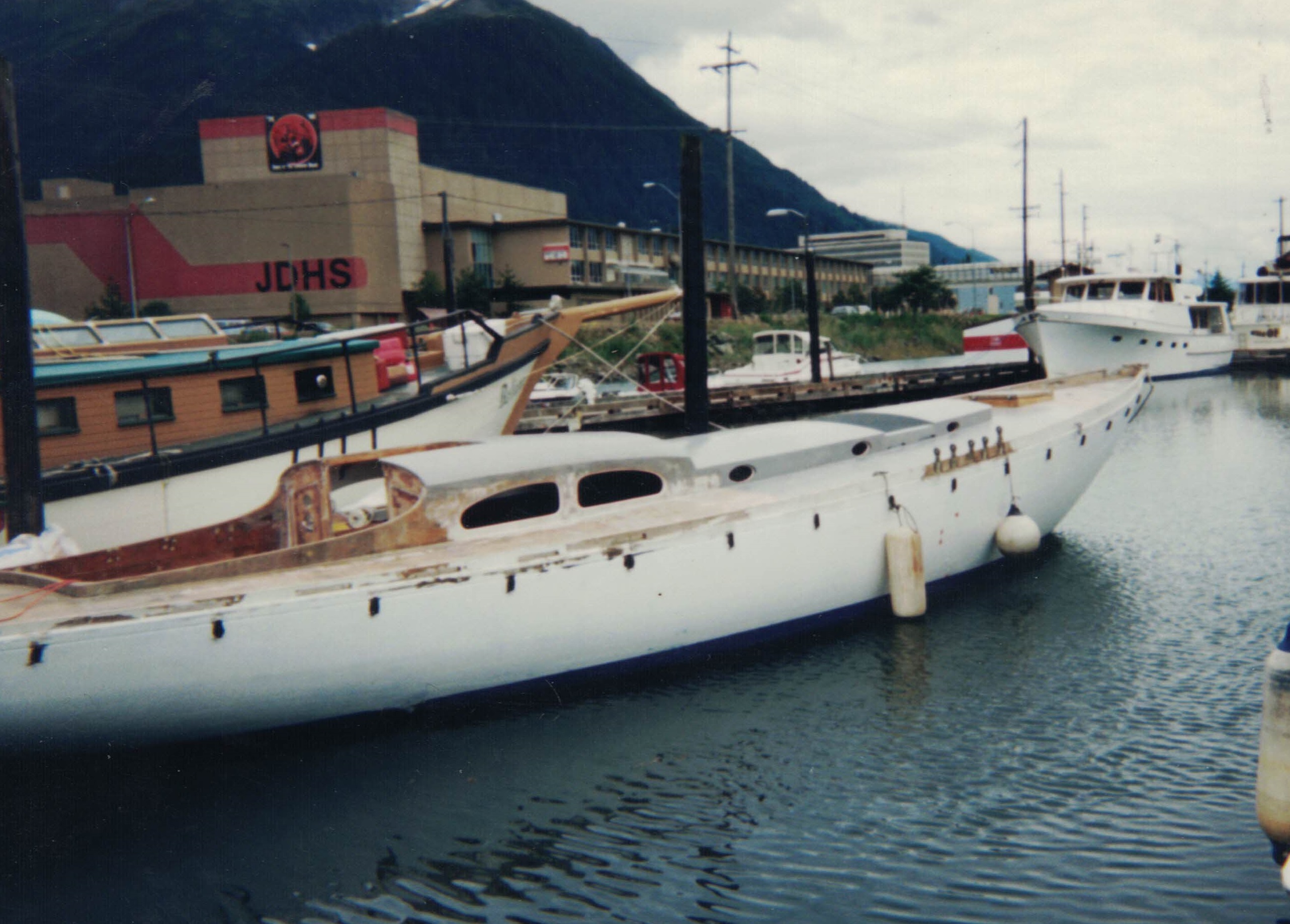
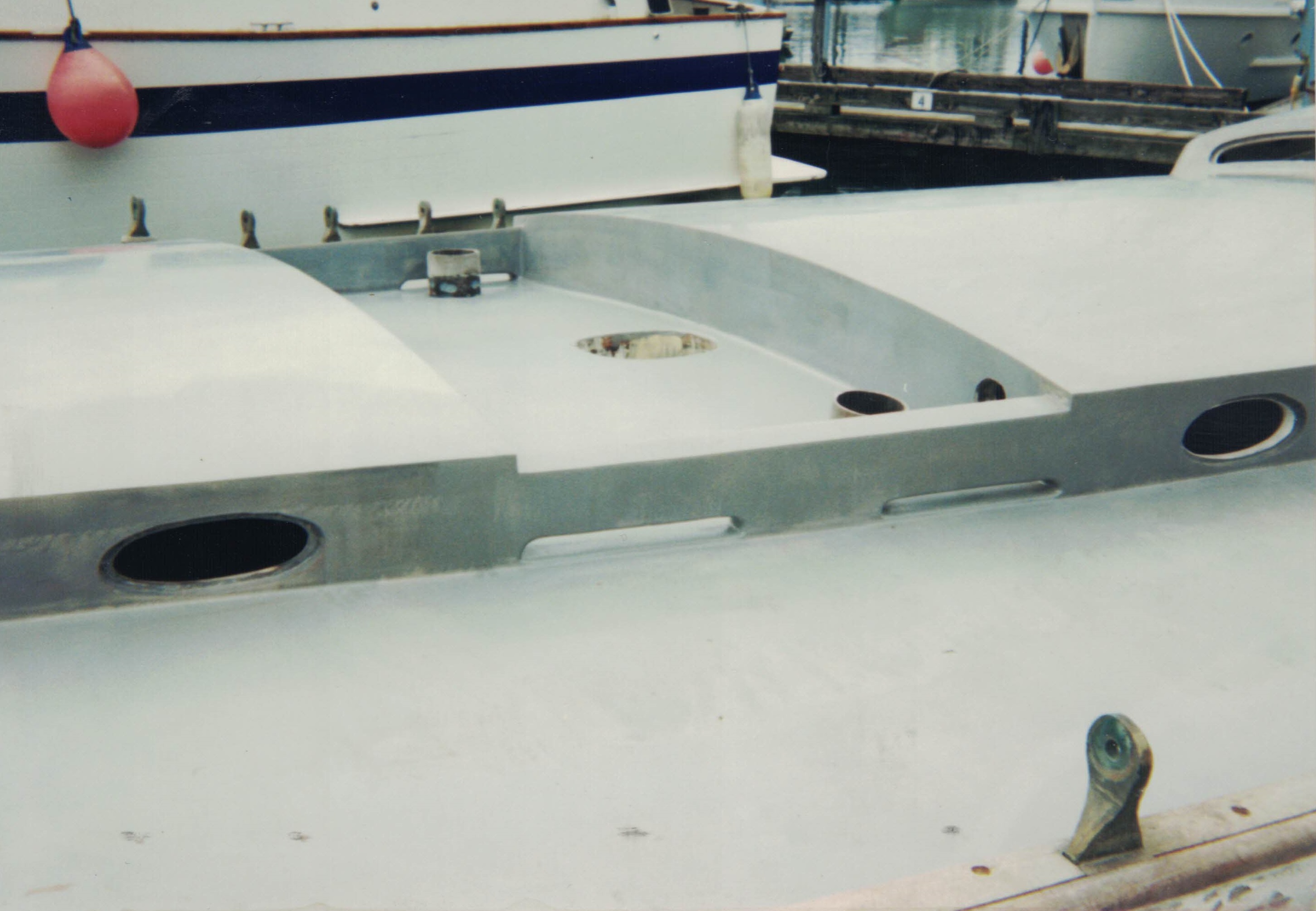
In the photo above the details of the area around the mast can be seen. This is the area I call the bridge deck, or more commonly “the well” as it is usually where we toss all sorts of stuff while sailing that we want ready access to. It now has dorade vents and stainless steel pulpits on each side of the mast. Between the pulpits and the area for bracing feet it offers a secure spot to work at the mast. The decking around the mast was the one area I removed. I left the diagonal planking below and then laminated 1/4-inch plywood over it in five layers, so it is actually a quarter inch proud of the rest of the deck. It helps spread the loading from the mast out to the deck beams. The plank ends at the mast partners had been subjected to a lot of water over the years. My reasoning for adding the extra quarter inch is no longer clear to me but it made for a very strong section of deck.
I spent a lot of time fairing all this out. I crawled endlessly around this deck making sure that the whole thing was smooth and fair. Then after getting the barrier coat on, it was sanded again for primer and then sanded again before paint.
Also by 1995, I was no longer running the landing craft. I’d sold my half the business to my partner due to philosophical differences and had gone seeking other work. I had found it as a contractor working for NOAA. In the Spring of 1994 they brought me on to work as the shore-side liaison for their research vessell, the John N. Cobb, which was from the same period as Leda, being launched in 1950. My duties that first summer where to provide both the ship and scientific crews with support in loading, warehousing and manufacture of specialized gear. Additionally I provided some repair and maintenance skills to the vessel. This latter usually consisted of items that could be built in the shop while they were at sea. The facility had a complete woodshop and machine shop left over from WWII. I was up to my eye-balls in vintage boatness. We could have built a minesweeper with the stuff we had. It was a wonderful time to work there and a wonderful opportunity for a guy who was rebuilding a vintage boat. I eventually got more duties that focused on maintenance of the lab. But I spent my summers living in the workshop and on the pier.
Additionally by 1995, we had been corresponding with the Wilsons in New Zealand and had been to visit twice, in February of ’94 and again in February of ’95. I’ll write more about that in another section. I recently went through all my letters written during this time and was amused that at one point I had said that we would have Leda out sailing by 1995. Obviously I was a bit optimistic in my view.
We had a number of goals to address while hauled out. We were due for a scrub and bottom paint. I wanted to do some work on the topsides. In preparation for getting the motor back in I needed to get after the shaft and shaft gland and get them ready. We had a rib we wanted to repair, so we sistered in a new one. We had one that was cracked. Dooley thought maybe it had been like that since launching. Regardless, you never haul a boat without finding stuff to do.
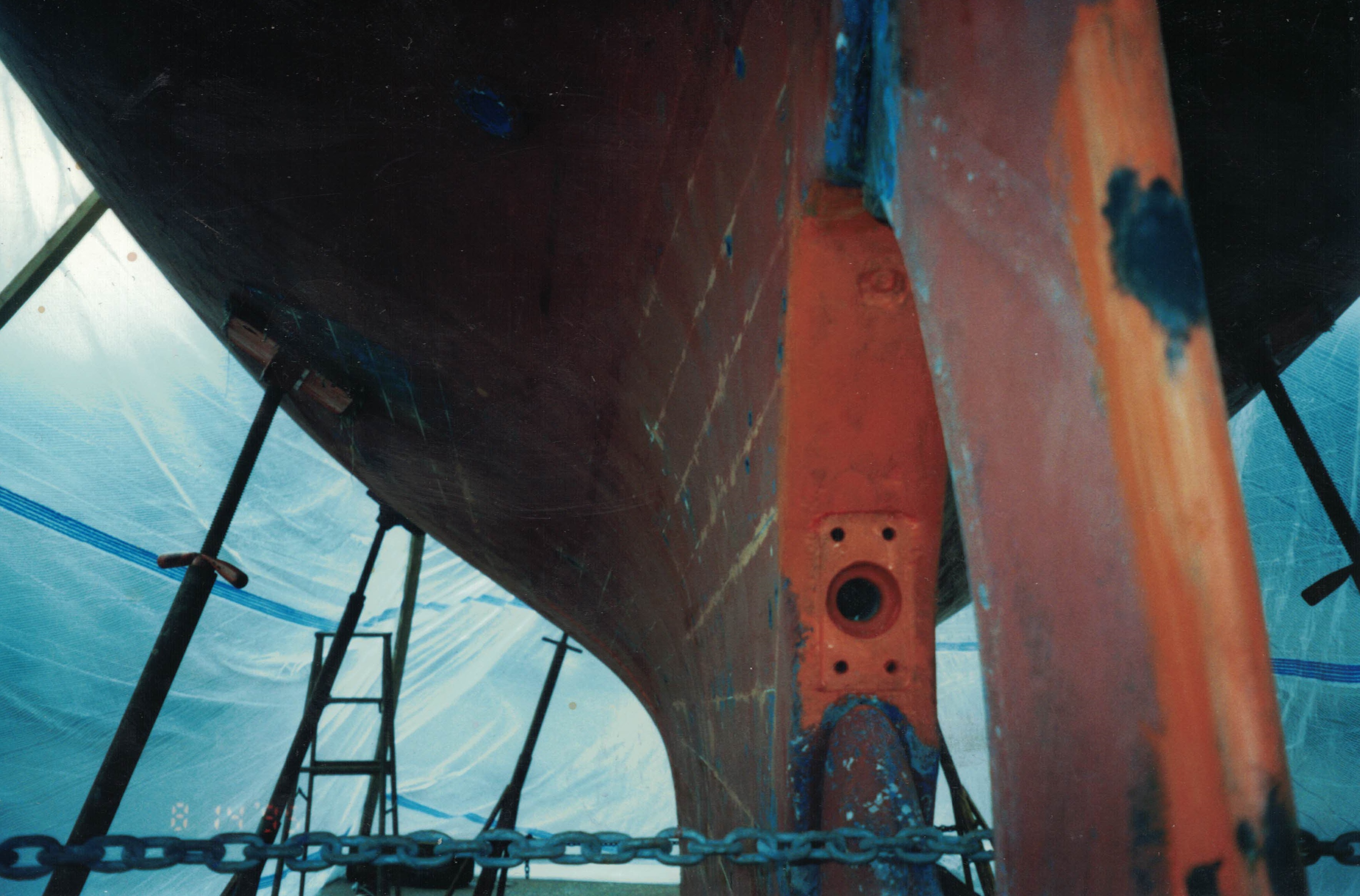
It was decided to take the boat down to bare wood while she was out of the water. We mixed up linseed oil, turpentine and added copper naphthenate to soak into the planking. We called this stuff “Panther Piss”. The idea is to get the linseed oil into the cell structure of the wood so that water doesn’t have anywhere to go. The turpentine helps it penetrate and the copper naphthenate is a preservative as it kills fungus.

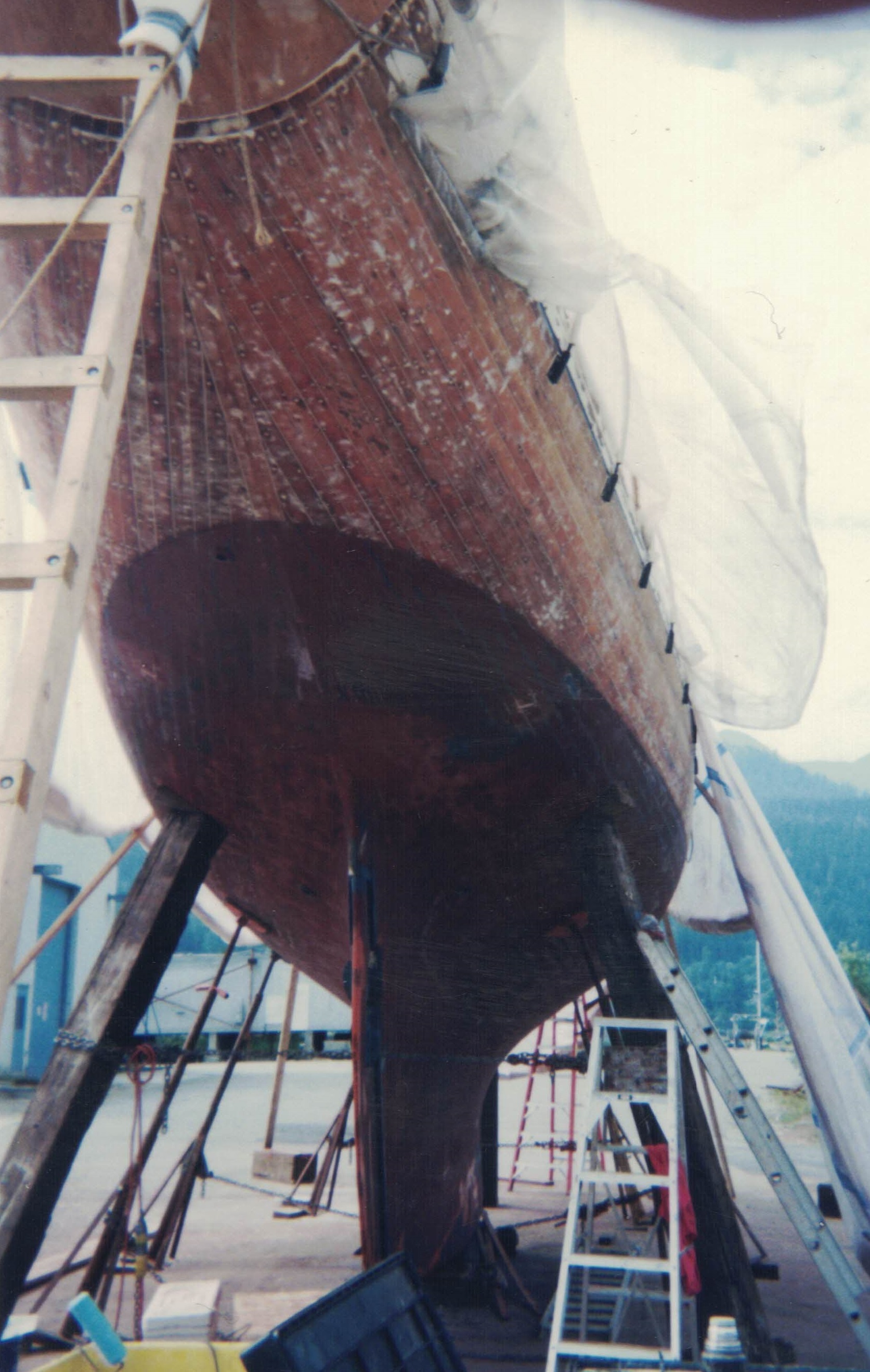
During this haul out a friend who is a marine surveyor helped us with some of the work and while Leda was up he tapped her hull. What he found was that some areas of the hull did not ring with the same nice tone as others. He suggested that the fasteners might need to be addressed. Basically what he was hearing was the void between the planking as opposed to the two sets of planking ringing in unison. His opinion was that the rivets had stretched or the wood had shrunk or a combination of the two events had left some areas “loose”.
This presented a quandary (and more than one argument). Refastening a double planked, copper riveted hull is no small idea. Impossible is more like it. The hull would have to be completely gutted and over 8,000 rivets would have to be removed and replaced. Ouch! It does not work to tighten old rivets by further peening. If the rove is not lose enough to slide down the shaft all you will accomplish is to bend the shaft of the rivet which will straighten back out when tension is applied. I considered running screws into the frames along side the rivets but couldn’t bring myself to do it.
I talked with a number of people including Dooley about this. Opinions ranged from do them all to do nothing. Dooley felt that it was likely that Leda had been like that since she was launched. His comment was that it would have been impossible to get the entire skin riveted to the exact same tension when they built it, “we weren’t machines”. I was torn between doing what I wanted, which was to push forward and get sailing or doing what was right for the boat. I agreed with Dooley but I couldn’t be sure that I was making a decision based on my emotions. I couldn’t be certain that Dooley wasn’t making his decision based on emotions. He wanted to see Leda out sailing again perhaps worse than I did. I don’t think this can be discounted on a project of this scope. Nobody that I know starts a project like this unless they are romanticizing the end result. It’s what keeps you going and just like all romance, sometimes the decisions are not well grounded in logic.
This debate was not solved while Leda was sitting out on the hard. Leda was back in the water and covered up in her stall. It occurred to me at some point that if I could only get Panther Piss in between the layers of planking that it would go a long way toward helping out her hull. The wood would soak up the oil and swell. The time had come to remove the toe rail anyway, so off it came. As I had decided on a course of action. Again, I will apologize for the photos I cannot find for somewhere in them is the picture of an apparatus I made with the intent of getting oil in between the planks. I made a vat out of a length of 8-inch PVC pipe and tapped ten holes around the base for small petcocks. Each one was fitted with a hose and an air needle like the ones used to inflate basket balls. I then drilled 5/32″ holes in the covering board above the interface of the two sets of planking. The needles where inserted into the holes , and I kept this thing full of Panther Piss and let it trickle between the planking until it was running out in the bilge. I kept the petcocks adjusted to a drip. When I was satisfied, I would then drill ten new holes (all just a few inches apart) and move the contraption along. I did the entire hull this way. I dubbed my octupus-looking contraption the “Panther Piss-O-Matic”. The name was scrawled across the side in permanent marker more or less as a joke. But it wasn’t a joke from the standpoint of what it accomplished. The least of which not being how great the boat smelled. So long as one loves the smell of turps and linseed oil.
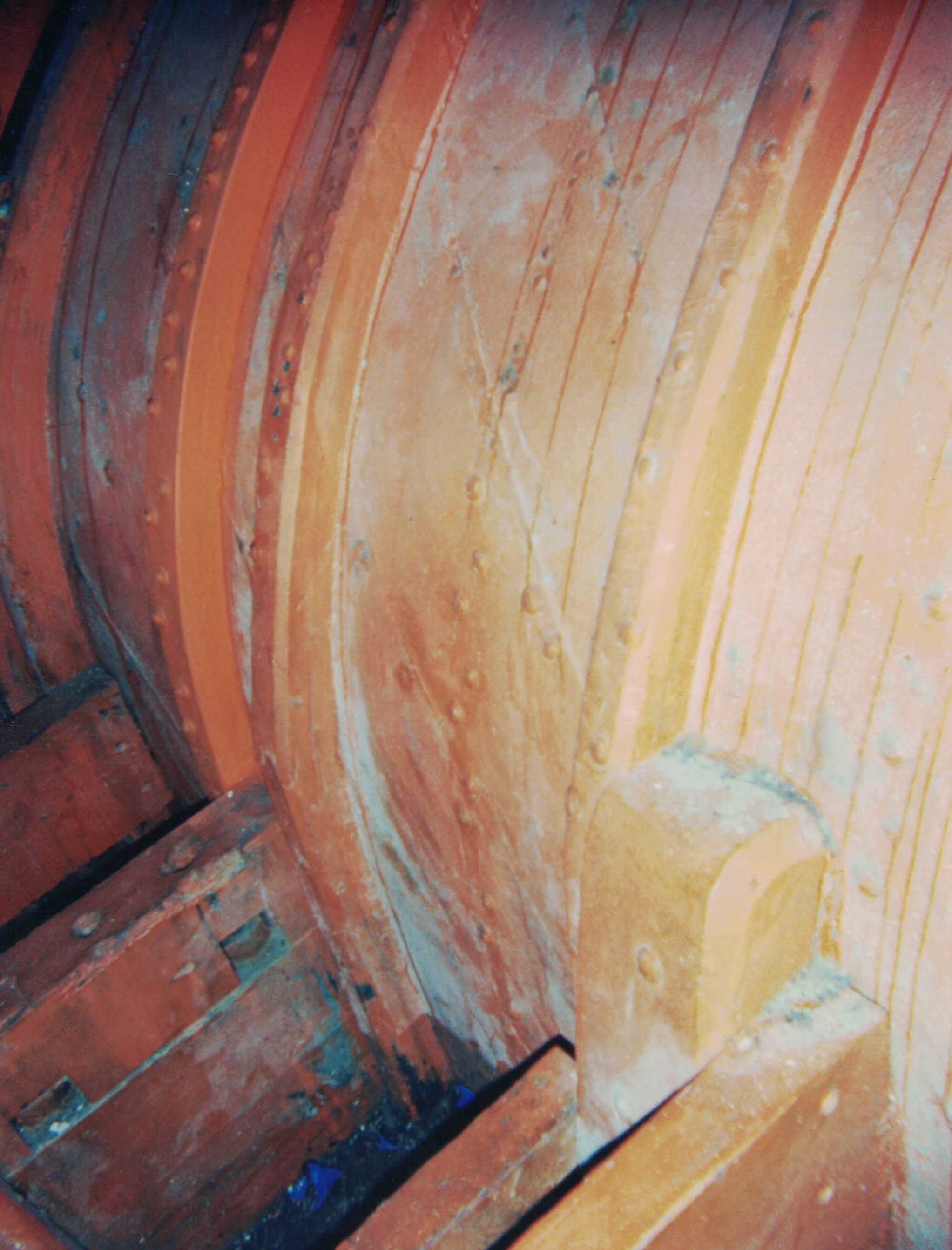
I believe it took until sometime in 1996 to finish this process. I did not rush it. I could see the oil wicking up around the rivets and soaking into the ribs. It trickled out from between the diagonal planks and it ran into the bilge. It soaked into the planking and the dried wood cried in relief, swelled up and tightened the rivets. I could not have been happier. I have no record of how much oil was eventually trickled in. I do remember scraping a couple of gallons of goo out of the lowest part of the bilge before getting the engine back in.
So let’s recap what had been accomplished to date.
- Leda’s bilge had been completely opened up, cleaned with a wire wheel and repainted with red lead.
- Her deck had been completely cleared and cleaned. Wood strips were glued between planks, silicone bronze ring-nails had been banged into place and the lot covered with fiberglass cloth and West Systems epoxy.
- The coach roof had been repaired and given the same cloth and epoxy treatment in two layers.
- The engine had been rebuilt. New engine beds were in progress.
- The cockpit had been torn apart and a new rudder “post” above the horn timber had been installed.
- Her transom or “tuck” had been replaced.
- All of her wiring and plumbing had been removed.
- Her mast had been rebuilt and was awaiting paint and hardware.
I think that covers the main points. Still left to accomplish:
- Cockpit, lockers, drains and floor.
- Install tanks for diesel and water and replace the cabin sole
- Install the engine
- Build new bulkheads
- Finish the Panther Piss treatment and reinstall the toe rails after running cloth and epoxy out past the edge of the deck.
- Paint the entire deck area.
- Address hatches, windows and ports, caps and trim.
- Install all deck gear, rigging, wiring, plumbing
- Have sails made
- Somehow make it all fit together
We still had our work cut out for us.
Next: The Transom